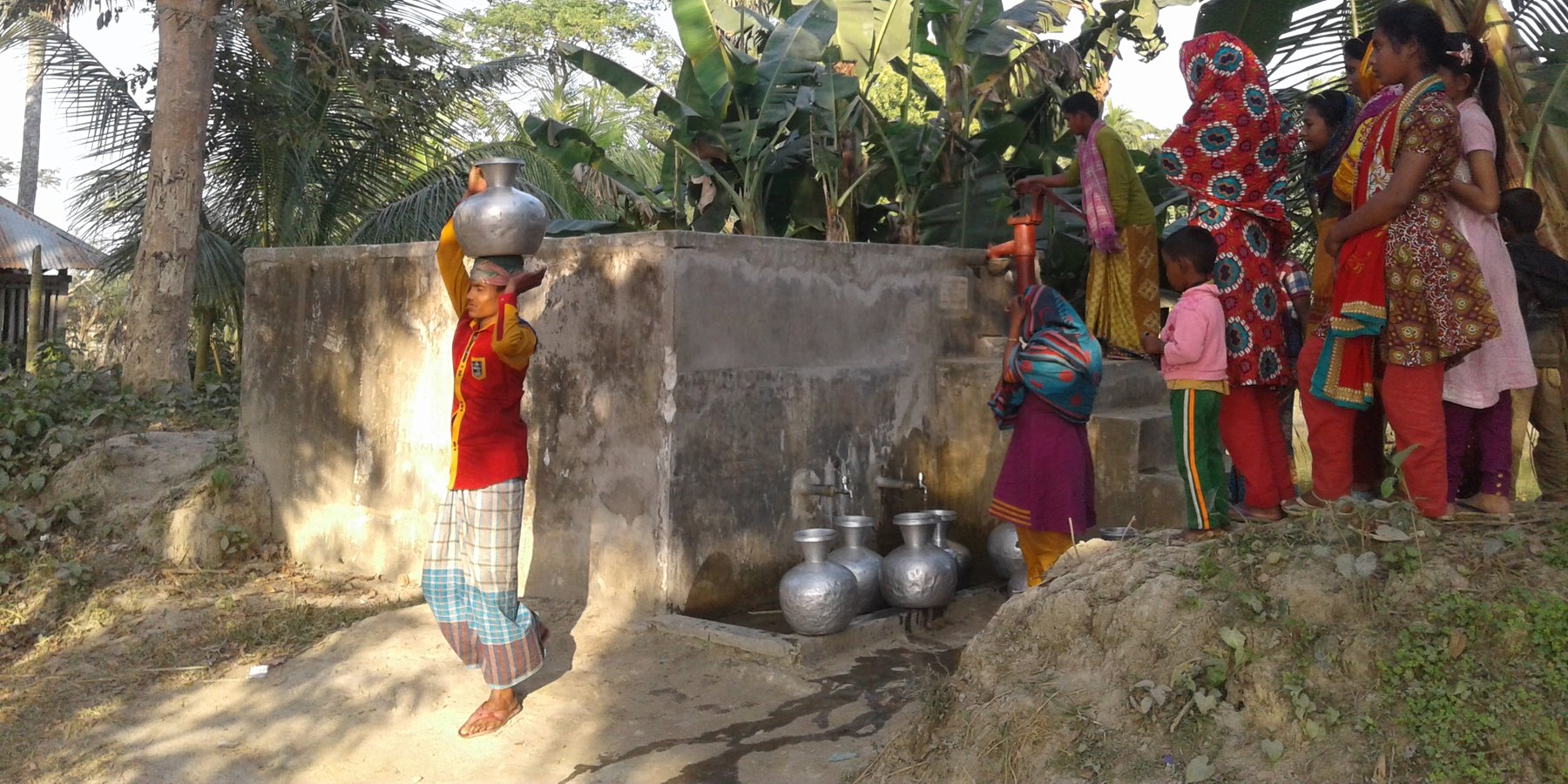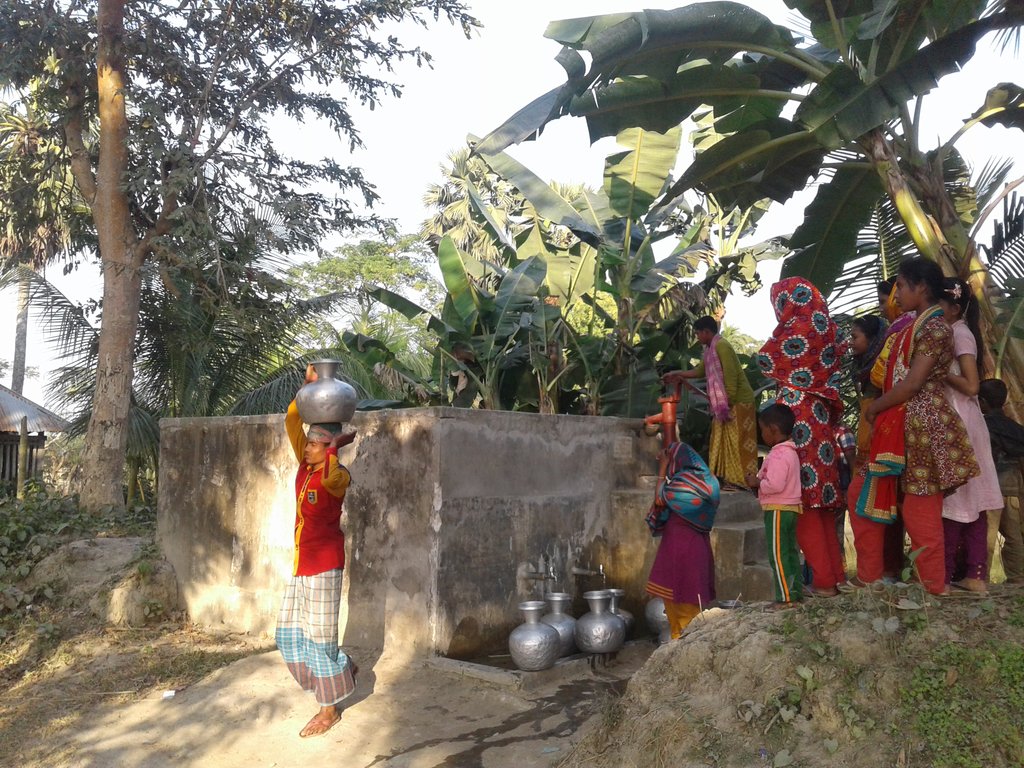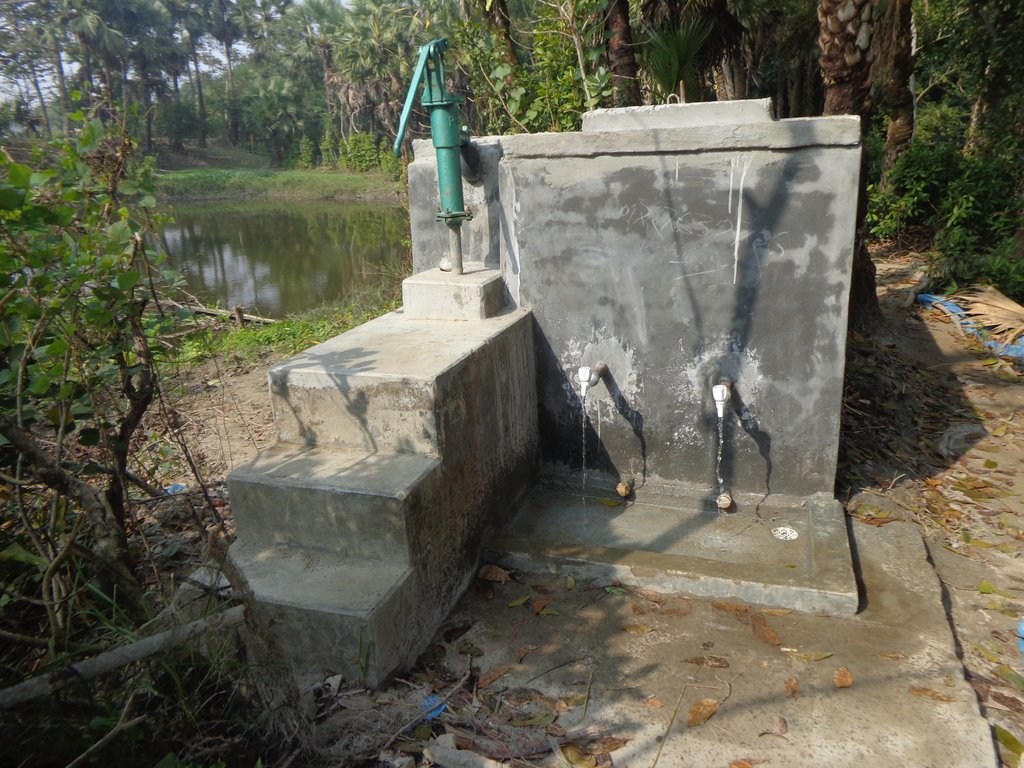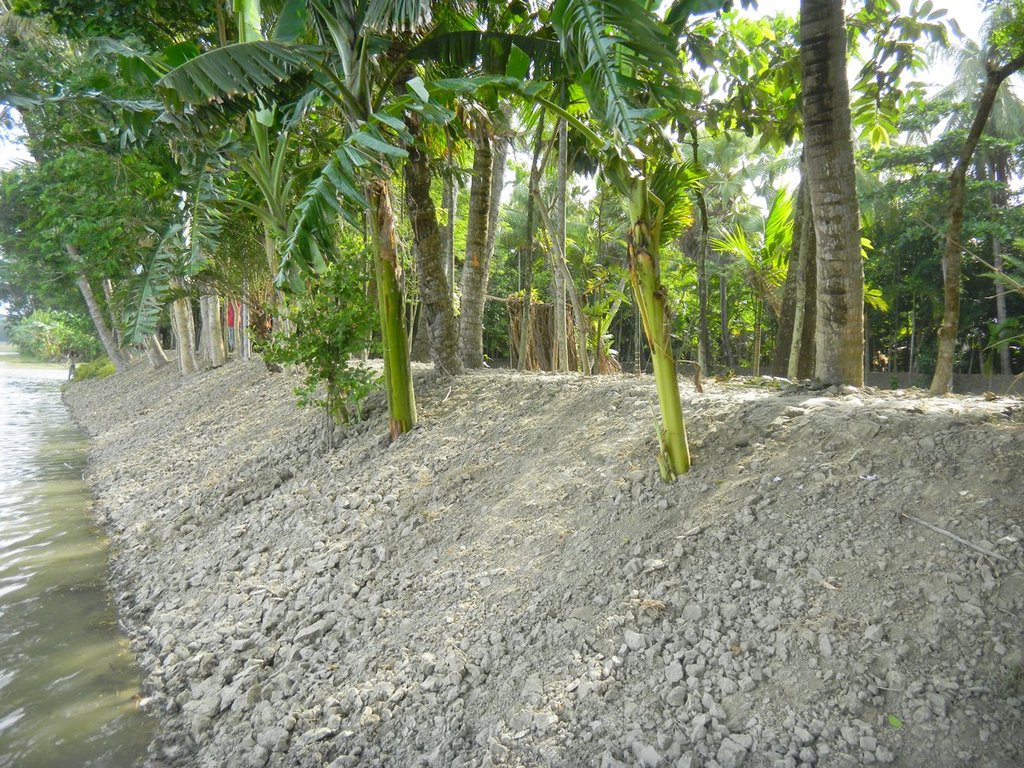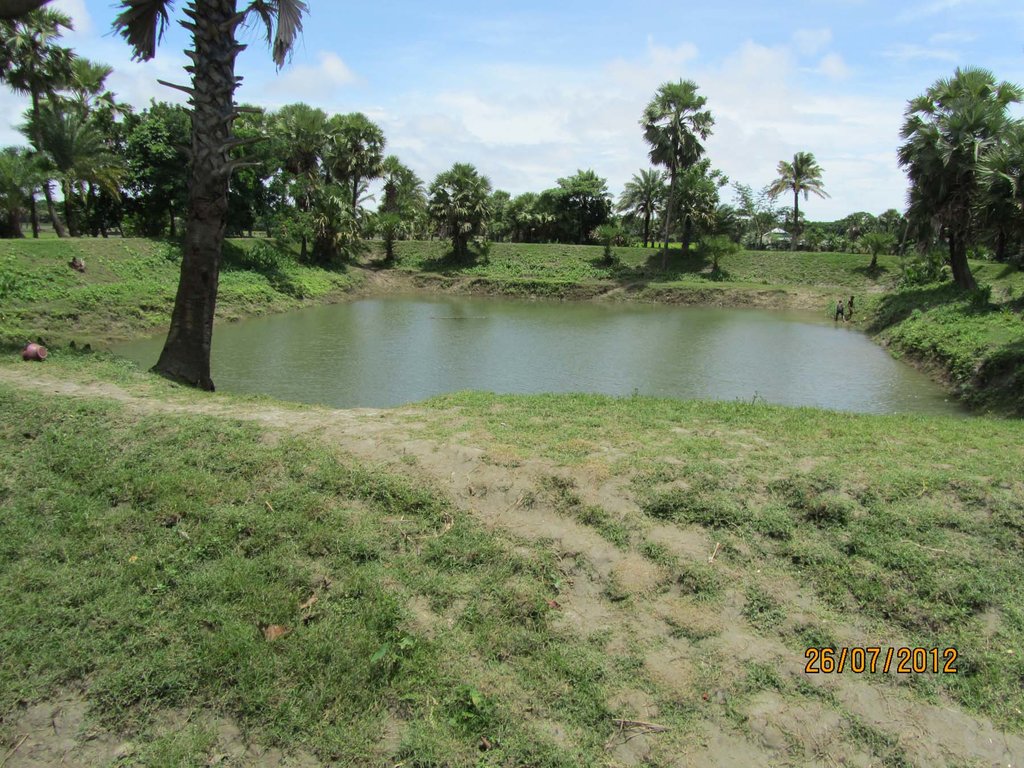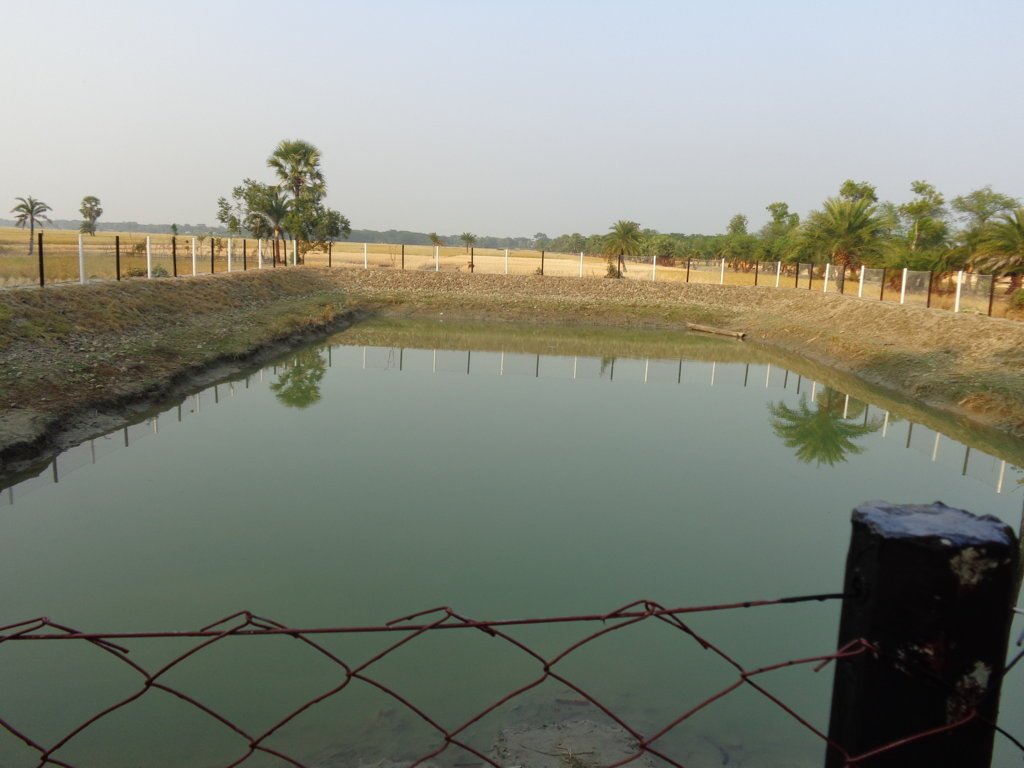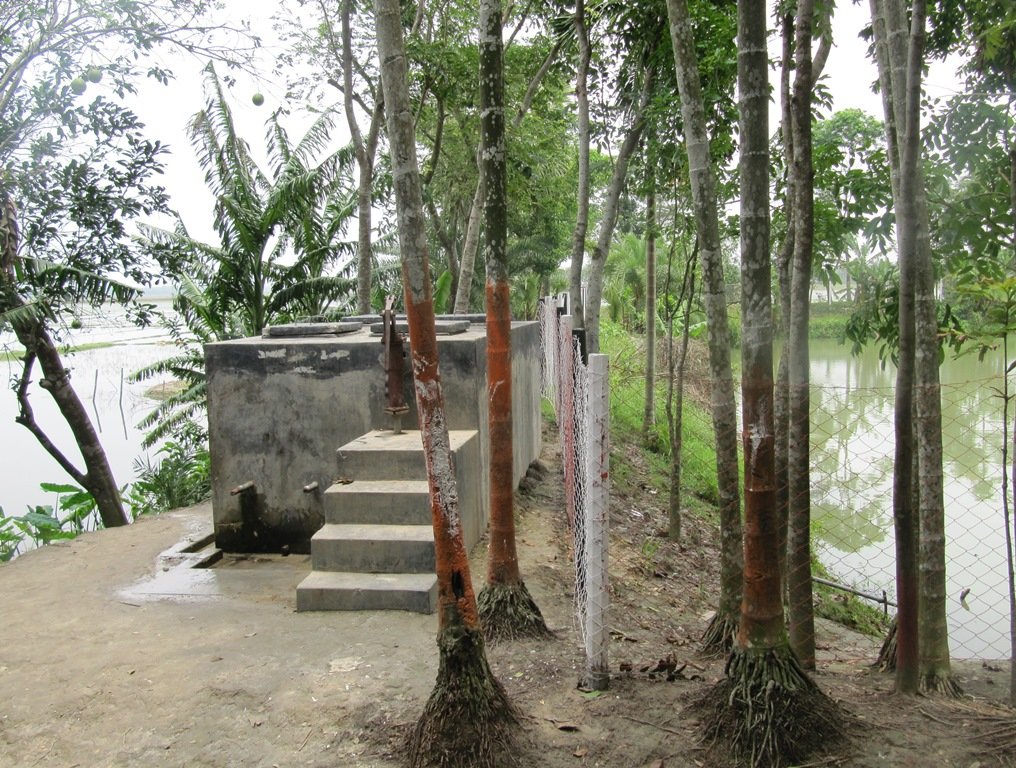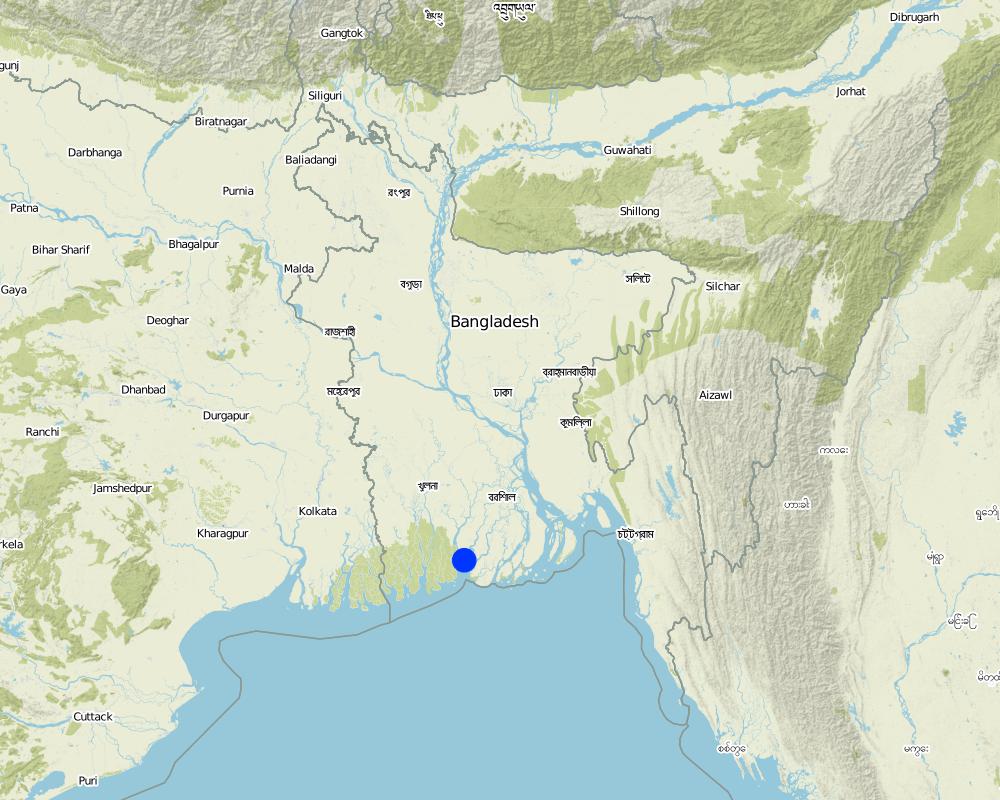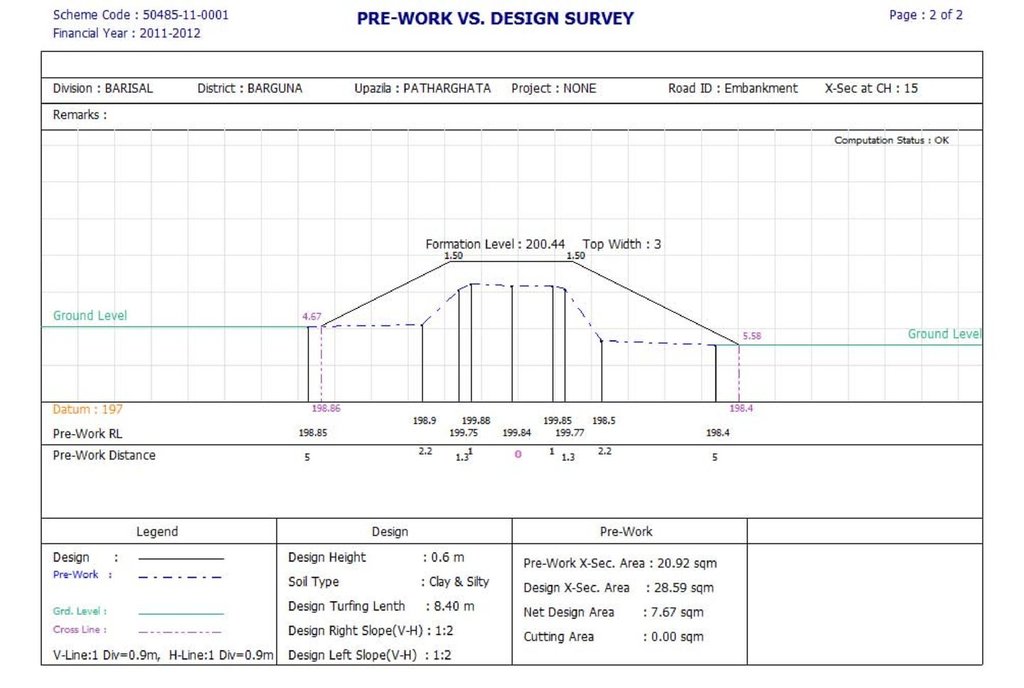Pond Sand Filter (PSF) with Raised Embankment [Бангладеш]
- Создание:
- Обновить:
- Составитель: John Brogan
- Редакторы: Shahid Kamal, Md. Rahmatullah Faruque
- Рецензенты: Alexandra Gavilano, Hanspeter Liniger, Nicole Harari, Deborah Niggli
FILTER
technologies_550 - Бангладеш
Просмотреть разделы
Развернуть все Свернуть все1. Общая информация
1.2 Контактные данные специалистов и организаций, участвующих в описании и оценке Технологии
Название проекта, содействовавшего документированию/оценке Технологии (если применимо)
Book project: where people and their land are safer - A Compendium of Good Practices in Disaster Risk Reduction (DRR) (where people and their land are safer)Название организации (-ий), содействовавших документированию/оценке Технологии (если применимо)
Terre des Hommes (Terre des Hommes) - Швейцария1.3 Условия, регламентирующие использование данных, собранных ВОКАТ
Составитель и ответственный(-ые) специалист(-ы) согласны с условиями, регламентирующими использование собранных ВОКАТ данных:
Да
1.4 Декларация по устойчивости описываемой Технологии
Вызывает ли описанная здесь Технология проблемы деградации земель настолько, что ее нельзя назвать природосберегающей?
Нет
2. Описание Технологии УЗП
2.1 Краткое описание Технологии
Определение Технологии:
The combination of pond sand filters (PSF) and raised pond embankments protect drinking water sources and increase the resilience to flood and tidal surge events in low-lying coastal areas.
2.2 Подробное описание Технологии
Описание:
Coastal areas along the Bay of Bengal experience extreme seasonal variance in the presence of surface water including flooding, tidal surge, and drought. Many families living in these rural communities construct small ponds to ensure water availability for a variety of uses, such as washing, bathing, fish farming and animal watering as well as domestic use. Some families build larger ponds that are open to the use of all community members; whereby water is carried by women and children to households. Use of pond surface water may last up to several months during the year depending on the location, seasonal weather patterns, geologic conditions, capacity of the pond and user habits. Residents rely on ponds as a source of drinking water during the dry season when household rainwater harvesting techniques are no longer viable, making treatment essential.
Pond sand filters (PSF) is acentralised or semi-centralised water treatment technology often employed in many coastal areas where surface water is the only option due to saline aquifers and lack of resources for more robust, safely managed community water supply systems. The technology uses slow-sand filtration to remove turbidity (sediments) and pathogenic organisms whereby freshwater flows through layers of sand and gravel populated by a thin layer of microorganisms and treatment happens through physical and biological processes. Due to resource constraints, the number of PSF serving as water sources is usually limited. The technology considerably reduces the risk of infection with enteric pathogens. In conjunction with PSF, safe water transport (covered and cleaned containers) and household water treatment systems (chemical or additional filtration devices) are essential.
As stated in the Sustainable Sanitation and Water Management Toolbox (SSWM) slow sand filtration systems are characterised by a high reliability and rather low lifecycle costs. Moreover, neither construction nor operation and maintenance require more than basic skills. Hence, slow sand filtration is a promising filtration method for small to medium-sized, rural communities with a fairly good quality of the initial surface water source. As stated by the the World Health Organisation, slow sand filtration provides a simple but highly effective and considerably cheap tool that can contribute to a sustainable water management system.
Once a SSF facility is built, only clean sand is required for occasional replacement. The sand layers are put in gradually according to their grain sizes: rather coarse grains at the bottom and fine grains at the top. The sand-bed is usually covered with one meter of supernatant water (LOGSDON 2003). As the process of biological filtration requires a fair amount of time in order to improve effectiveness of water treatment, SSFs usually operate at slow flow rates between 0.1 – 0.3 m3/h per square metre of surface (WHO n.y.). The water thus remains in the space above the medium for several hours and larger particles are allowed to separate and settle. It then passes through the sand-bed where it goes through a number of purification processes (HUISMAN 1974).
Due to the risk of inland flooding and (seawater) tidal surges from offshore storms, communities build earthen embankments around the ponds to prevent contamination. Local authorities and community members must be involved in the design height of the embankment—which should be equivalent to the highest pre-recorded flood level. In the geo-referenced area (Patharghata) this is equivalent to the tidal surge of Cyclone Sidr (2007). Constructed roadways are often a good reference point. In southern Bangladesh , rural roadways are built to at a ten-year flood return period, so exceeding this height according to the means of the community and/or project is recommended.
Pond embankments are best raised with soil preferably of a clayey nature. The final covering layer must be rich in clay. Embankments should be planted with native grasses and flora that have strong root systems to stabilize slopes and prevent erosion during the rainy season and in cases of tidal surge due to storms. In Bangladesh, the native kolmi (Ipomoea) has proven effective. Community members have also planted crops on the embankments, such as banana trees, medicinal plants and even small garden trenches in the middle of the slope. Beyond structural support, the horticulture helps diversify nutrition and can provide a source of income for maintaining the pond sand filter.
Fences should be installed to prevent animals from entering ponds reserved for drinking water. Community members must guarantee that the ponds selected for PSF construction shall not be used for purposes such as: washing, bathing, fish farming (natural fish however can be allowed), direct cattle access washing and watering. Furthermore:
•Fertilizers and other chemicals shall never be allowed to go into the pond.
•The flow of any polluting materials in the vicinity of the pond shall always be directed away from the pond.
•Latrines, cowsheds, garbage dumps, graveyards, fuel outlets and similar polluting structures shall not be constructed within a distance of 30 meters from the pond.
•Duck or poultry rearing hanging sheds shall never be constructed over the pond.
2.3 Фотографии, иллюстрирующие Технологию
2.5 Страна/ регион/ места, где применяется Технология, информация о которых собрана в данной Анкете
Страна:
Бангладеш
Административная единица (Район/Область):
Patharghata, Barguna district in coastal region
Более точная привязка места:
Baratangra, Ward:4, Union: Patharghata Union Parishad
Охарактеризуйте пространственное распространение Технологии :
- примененяется точечно/ на небольших участках
Пояснения:
This technology may be applied to selected ponds within a community.
Map
×2.6 Сколько лет применяется данная Технология
Если год начала применения Технологии достоверно неизвестен, дайте примерную оценку:
- менее 10 лет назад (недавняя)
2.7 Внедрение Технологии
Укажите, как именно Технология УЗП была внедрена:
- как часть традиционной системы землепользования (более 50 лет назад)
- через проекты/ внешнее вмешательство
3. Классификация Технологии УЗП
3.1 Основные цели и задачи реализации Технологии
- снижение риска стихийных бедствий
- адаптация к изменению климата / экстремальным погодным явлениям и их последствиям
3.2 Текущий(-ие) тип(-ы) землепользования на территории, где применяется Технология
Комбинированное землепользование в пределах одной и той же земельной единицы:
Да
Укажите сочетания типов землепользования (посевы / пастбища / деревья):
- Агролесоводство

Пахотные угодья и плантации
- Однолетние культуры
- Многолетние (недревесные) культуры
- Древесные и кустарниковые культуры
Ежегодный урожай - Уточните культуры:
- лекарственные/ ароматические / пестицидные растения и травы
Многолетние (недревесные) культуры - Уточните культуры:
- банан / подорожник / абака
Число урожаев за год:
- 2

Леса/ лесистая местность
3.3 Изменилось ли использование земель в связи с внедрением Технологии?
Изменилось ли использование земель в связи с внедрением Технологии?
- Нет (см. пункт 3.4)
3.4 Водоснабжение
Обеспеченность водой участков, где реализуется Технология :
- богарные земли
3.5 Категория УЗП, к которой относится Технология
- управление поверхностными водами (родники, реки, озёра, моря)
3.6 Мероприятия УЗП, выполняемые в рамках Технологии

инженерные мероприятия
- И2: Насыпи, валы
- И5: Дамбы, водохранилища, пруды
- И7: Водосборное/ водопроводное/ оборудование для орошения
3.7 Основные проблемы деградации земель, на решение которых направлена Технология

водная эрозия почв
- ВЭп: поверхностная эрозия/смыв верхних почвенных горизонтов

деградация водных ресурсов
- Вуп: изменение объема поверхностного стока
- Взп: снижение качества поверхностных вод
Пояснения:
Preventing salt water intrusion, the surface water quality and quantity is protected. Turfing and planting the embankment prevents erosion.
3.8 Предотвращение и снижение деградации земель, или восстановление нарушенных земель
Укажите цель Технологии по отношению к деградации земель :
- не применимо
4. Технические характеристики, мероприятия по практической реализации, вложения и стоимость
4.1 Технический рисунок, иллюстрирующий Технологию
Спецификация (пояснения к техническому рисунку):
PSF is built on top of the raised embankment as a reinforced concretes structure consisting of a sand filter chamber, filtered water chamber and the sedimentation tank. The height is 4 feet 2 inches; Length-14 feet 5 inches; Width-7 feet. The capacity of PSF is 2500 liters. The construction materials used include include brick, sand, brick chips, cement, galvanized iron pipe, water tap and rebar.
The medium in the filter chamber shall comprise of three layers: 1) filter sand of 2 feet (60 cm) depth placed above 2) a 3” layer of fine gravel and 3) a 3" layer of coarse gravel.
1) The filter sand shall have the following size and grade: (a) Sand grains in the range 0.1 to 1 mm, with (b) effective size ( d10) in the range 0.15 to 0.20; and (c) Uniformity Coefficient ( d60/d10) in the range 1.5 to 2.5. Sieves are used to test sand size and grade.
The "under drainage" bottom gravel layers:
2) Fine gravel: 3” layer ¼” to 1 mm grains (gravel that passes through the ¼” sieve and are retained on 1 mm sieve)
3) Coarse gravel: 3" layer of ½” to ¼” grains (gravel that passes through ½” sieve and are retained on ¼” sieve)
Use different sized sieves made of wire mesh in wooden frame to prepare the media to prepare the two layers of gravel.
Every 5-6 weeks (or when flow rate is limited) cleaning the filter should be performed. Remove the filter aggregate layers, clean the PSF by removing any remaining objects in the three chambers (sand filter chamber, filtered water chamber and the sedimentation tank). Clean these chambers thoroughly using hard brush in necessary. Sequentially clean and replace t the coarse gravel media, then the fine gravel media, and finally the filter sand. For cleaning the gravel and sand place about 1/4th bucket of grave or the sand in plastic bucket (8, 10 or 12 liters, whichever may be convenient), pour about ½ bucket of water and then wash lifting the gravel or the sand from the bottom with hand several times, then decant the water by tilting the bucket. (Only fine particles less than 0.1 mm should be poured out while washing the sand.)
Raised Pond embankments are built with earthworks of clayey soils designed per the maximum flood height. The design depicted in this section is an indication, however the services of a qualified structural/civil engineer will be required. In general building the embankment is raised 0.6m above the maximum flood level is recommended, at a slope of 1:2. From the ground level, the average height of an embankment is two meters, and the average excavation depth is also two meters. All plans for both embankment works and PSF construction were reviewed and approved by the Bangladesh Government Department of Public Health and Engineering.
Автор:
Terre des hommes
Дата:
30/06/2016
4.2 Общая информация по необходимым вложениям и стоимости
Уточните, как рассчитывались затраты и вложения:
- на технологическую единицу
Укажите единицу:
Pond Sand Filter with raised earthen embankment
Укажите единицы измерения (если необходимо):
2,500 Litres capacity of filter; embankment average of 100 meter perimeter.
Укажите денежные единицы, использованные для подсчета затрат:
- Доллары США
Укажите среднюю дневную заработную плату наемных работников:
5 $ per day for labor
4.3 Мероприятия, необходимые для начала реализации
| Деятельность | Время (сессия) | |
|---|---|---|
| 1. | Community consultation for Committee Formation | Before onset of rain |
| 2. | Create PSF Users' Committee, agre on user contributions | Before onset of rain |
| 3. | Committee / pond selection approved by local Government | Before onset of rain |
| 4. | Technical orientation to PSF Committee, input on designs | Before onset of rain |
| 5. | Excavation of Pond | Before onset of rain |
| 6. | Embankment Construction | Before onset of rain |
| 7. | PSF Construction | |
| 8. | Fencing | |
| 9. | Turfing and hortiuclutre on the embankment | Before onset of rain |
| 10. | PSF Training on Media Selection and maintenance | Regular intervals throughout the year (every 1-2 months) |
| 11. | Pond embankment maintenance | Before onset of rain |
Пояснения:
In general, the community approach begins with several consultation meetings in the community (inclusive: gender balanced and representative of the diversity makeup of the community) and with municipal authorities. An Outcome Mapping process is initiated to observe signs that a village is prepared and mobilized to receive support for PSF and pond embankment construction. Families must be willing to participate and contribute in the construction and take complete responsibility for operation and routine maintenance.
During the initial phase, a PSF Users’ Committee is formed and approved by the municipal government. Its members make time to participate in trainings on the design, use, maintenance and community organization for managing a PSF. Importantly, the PSF User’s committee must seek public commitments toward the construction costs in cash and/or in kind (labor, construction materials, embankments plants, etc). In Bangladesh this was 10% and usually in kind. Roles and responsibilities of the PSF Users’ Committee:
1)Be responsible for regular operation, maintenance and cleanliness of the pond sand filter;
2)Ensure that the maintenance points for pond water quality is respected per the manual;
3)Advocate for local authorities to conduct regular water quality testing; and to promote household water treatment systems
4)Establish a system of collecting money from users for the regular maintenance;
5)Organize Committee meetings before the start of each season and whenever needed. Similarly if required organize a wider meeting with users in connection with resolving any O&M issues.
6)Care for the tools and other materials that may be purchased for the pond sand filter.
Selection of ponds for PSF construction should be participative with criteria agreed and communicated with the community members and local authorities. The following criteria are suggested based on Terre des hommes’ experience in Bangladesh:
•Ponds that are large enough to retain water throughout the dry season.
•The salinity of the pond water must not exceed 600 ppm at any time of the year.
•While the location of the PSF should be close to a family to ensure its security, it must be as centrally located as possible for ease of access
•Freely accessible to the public; ideally donated for public use.
•Ponds located on higher ground and thus more resistant to flooding / sea water intrusion.
•Space available for raising the embankments around the ponds
•Ponds most accessible to a largest segment of the population during disaster.
•Each PSF should have an effective drainage space and system.
4.4 Вложения и затраты, необходимые для начала реализации
| Опишите затраты | Единица | Количество | Затраты на единицу | Общая стоимость на единицу | % затрат, оплаченных землепользователями | |
|---|---|---|---|---|---|---|
| Оплата труда | Pond Excavation and Embankment Raising | Person-days | 180,0 | 5,0 | 900,0 | 10,0 |
| Оплата труда | Pond Fencing Works | Person-days | 20,0 | 5,0 | 100,0 | |
| Оплата труда | Masonry | Person-days | 36,0 | 6,25 | 225,0 | |
| Оборудование | Repairing tools | Set | 1,0 | 15,0 | 15,0 | |
| Оборудование | Tubewell/handpump | Pieces | 1,0 | 35,0 | 35,0 | 10,0 |
| Оборудование | Sanitary Fittings | Set | 1,0 | 100,0 | 100,0 | |
| Удобрения и ядохимикаты | Bleaching powder for disinfection | kg | 2,0 | 1,0 | 2,0 | 10,0 |
| Удобрения и ядохимикаты | Lime for cleaning | kg | 50,0 | 0,5 | 25,0 | |
| Строительные материалы | bricks | pieces | 6000,0 | 0,075 | 450,0 | 10,0 |
| Строительные материалы | cement | 50 Kilo Bags | 50,0 | 5,75 | 287,5 | 10,0 |
| Строительные материалы | sand | cubic feet | 52,0 | 0,375 | 19,5 | |
| Строительные материалы | mild steel round bar | kg | 210,0 | 0,75 | 157,5 | |
| Другие | Materials Transport Cost | Lump Sum | 1,0 | 185,0 | 185,0 | 10,0 |
| Общая стоимость запуска Технологии | 2501,5 | |||||
| Общие затраты на создание Технологии в долларах США | 2501,5 | |||||
Если землепользователем оплачено менее 100% затрат, укажите, кем покрывались остальные затраты:
The project requested 10% contribution in kind (materials, transport, labor) from each community. The remaining costs were covered by the project.
Пояснения:
The budget is for raising a 100m perimeter length of embankment.
4.5 Поддержание/ текущее обслуживание
| Деятельность | Сроки/ повторяемость проведения | |
|---|---|---|
| 1. | Repairing | Before onset of rains |
| 2. | Cleaning | Before onset of rains |
4.6 Стоимость поддержания/ текущего обслуживания ( в год)
| Опишите затраты | Единица | Количество | Затраты на единицу | Общая стоимость на единицу | % затрат, оплаченных землепользователями | |
|---|---|---|---|---|---|---|
| Оплата труда | two-monthly cleaning of filter materials | Person days | 12,0 | 5,0 | 60,0 | 100,0 |
| Оплата труда | Seasonal erosion control | Person days | 12,0 | 5,0 | 60,0 | 100,0 |
| Удобрения и ядохимикаты | bleeching powder | bag | 5,0 | 2,0 | 10,0 | 100,0 |
| Общая стоимость поддержания Технологии | 130,0 | |||||
| Общие затраты на поддержание Технологии в долларах США | 130,0 | |||||
4.7 Наиболее значимые факторы, влияющие на стоимость затрат
Опишите наиболее значимые факторы, влияющие на стоимость затрат:
Comparatively, construction materials costs was reflected as the most expensive consideration.
5. Природные и социально-экономические условия
5.1 Климат
Среднегодовое количество осадков
- < 250 мм
- 251-500 мм
- 501-750 мм
- 751-1000 мм
- 1001-1500 мм
- 1501-2000 мм
- 2001-3000 мм
- 3001-4000 мм
- > 4000 мм
Укажите название соответствующей метеостанции:
www.discoverybangladesh.com
Агроклиматическая зона
- полузасушливая
5.2 Рельеф
Склоны (преобладающие):
- пологие (0-2%)
- покатые (3-5%)
- покато-крутые (6-10%)
- крутые (11-15%)
- очень крутые (16-30%)
- чрезвычайно крутые (31-60%)
- обрывистые (>60%)
Формы рельефа:
- плато/ равнины
- гребни хребтов/холмов
- склоны гор
- склоны холмов
- подножья
- днища долин
Зона высотной поясности:
- 0-100 м над уровнем моря
- 101-500 м н.у.м.
- 501-1000 м н.у.м.
- 1001-1500 м н.у.м.
- 1501-2000 м н.у.м.
- 2001-2500 м н.у.м.
- 2501-3000 м н.у.м.
- 3001-4000 м н.у.м.
- > 4 тыс. м н.у.м.
Укажите, приурочено ли применение Технологии к специфическим условиям:
- не имеет значения
5.3 Почвы
Средняя мощность почв:
- поверхностные (0-20 см)
- неглубокие (21-50 см)
- умеренно глубокие (51-80 см)
- глубокие (81-120 см)
- очень глубокие (> 120 см)
Гранулометрический состав (верхнего горизонта):
- тонкодисперсный/ тяжёлый (глинистый)
Гранулометрический состав (на глубине более 20 см):
- тонкодисперсный/ тяжёлый (глинистый)
Содержание органического вещества в верхнем горизонте:
- среднее (1-3%)
5.4 Доступность и качество воды
Уровень грунтовых вод:
5-50 м
Доступность поверхностных вод:
недостаточны/ отсутствуют
Качество воды (без обработки):
питьевая вода плохого качества (необходима обработка)
Является ли солёность воды проблемой?
Да
Поясните:
groundwater table is salty along the Bay of Bengal, salt water intrusion. Tidal surge following cyclones also creates soil salinity.
Происходят ли периодические затопления территории?
Да
Регулярность:
часто
5.5 Биоразнообразие
Видовое разнообразие:
- средняя
Разнообразие местообитаний:
- средняя
5.6 Характеристика землепользователей, применяющих Технологию
Осёдлый или кочевой:
- Осёдлый
Рыночная ориентация производства:
- смешанный (натуральный / коммерческий)
Доходы из других источников:
- 10-50% всех доходов
Относительный уровень достатка:
- плохой
Индивидуальное или коллективное хозяйство:
- частное/ домовладение
- группа/ община
Уровень механизации:
- ручной труд
- тягловая сила
Пол:
- женщины
- мужчины
Возраст землепользователей:
- молодёжь
- средний возраст
5.7 Средняя площадь земель, используемых землепользователями с применением Технологии
- < 0,5 га
- 0,5-1 га
- 1-2 га
- 2-5 га
- 5-15 га
- 15-50 га
- 50-100 га
- 100-500 га
- 500-1000 га
- 1000-10000 га
- > 10000 га
Считается ли это мелким, средним или крупным хозяйством (по местным масштабам)?
- мелкое
5.8 Собственность на землю, права на земле- и водопользование
Землевладелец:
- индивидуальная, не оформленная в собственность
- индивидуальная, оформленная в собственность
Право землепользования:
- индивидуальное
Право водопользования:
- неограниченное (неконтролируемое)
5.9 Доступ к базовым услугам и инфраструктуре
медицинское обслуживание:
- плохой
- средний
- хорошая
образование:
- плохой
- средний
- хорошая
технические консультации:
- плохой
- средний
- хорошая
занятость (вне хозяйства):
- плохой
- средний
- хорошая
рынки:
- плохой
- средний
- хорошая
электроснабжение:
- плохой
- средний
- хорошая
транспорт и дорожная сеть:
- плохой
- средний
- хорошая
водоснабжение и канализация:
- плохой
- средний
- хорошая
финансовые услуги:
- плохой
- средний
- хорошая
6. Воздействия и заключительные положения
6.1 Влияние Технологии УЗП в пределах территории ее применения
Социально-экономическое воздействие
Продуктивность
производство сельскозяйственных культур
Комментарий/ пояснения:
Embankments provide a modest space for small scale gardening and fruit/medicinal tree cultivation. Such agriculture activities would be protected from tidal surge waters that destroy agriculture in low-lying areas.
Доступность и качество воды
доступность питьевой воды
Комментарий/ пояснения:
Terre des hommes had raised embankments on ten community ponds prior to cyclone Mahasen (2013). Nine of the ten ponds embankments remained intact, preserving valuable fresh water from sea water contamination for drinking after treatment with PSF.
качество питьевой воды
Количество до применения УЗП :
>1000 fecal coliform units
Количество после применения УЗП:
<10 fecal coliform units
Комментарий/ пояснения:
The PSF water source considerably reduces the risk of infection with enteric pathogens from the pond water. In Terre des hommes’ field experience, although a reduction in presence of fecal coliform (FC) by over 99% is possible, the PSF technology rarely eliminates all FC. A level of 1-10 fecal coliform units (FCU: colonies of E. coli per 100 mL of water) has been achieved, which is equivalent to an intermediate risk, or “probably safe” as defined by WHO. In conjunction with PSF, safe water transport (covered and cleaned containers) and household water treatment systems (chemical or additional filtration devices) are essential.
Доходы и затраты
экономическое неравенство
Социальное и культурное воздействие
состояние здоровья
Комментарий/ пояснения:
Users reported a decrease in water borne diseases through use of PSF water compared to surface water.
6.2 Влияние Технологии за пределами территории ее применения
доступность воды
Комментарий/ пояснения:
During disaster, the use of the PSF increased, with people walking from further distances to take water from the PSF to their homes.
6.3 Подверженность и чувствительность Технологии УЗП к постепенным изменениям климата и экстремальным погодным явлениям/ стихийным бедствиям, связанным с изменением климата (в понимании землепользователей)
Экстремальные явления, связанные с изменением климата (стихийные бедствия)
Стихийные бедствия климатического характера
| Насколько успешно Технология справляется с этим? | |
|---|---|
| засухи | хорошо |
Гидрологические стихийные бедствия
| Насколько успешно Технология справляется с этим? | |
|---|---|
| штормовые нагоны/ наводнения в прибрежной зоне | очень хорошо |
Пояснения:
PSF serves as disaster resilient Technology that helps residents in coastal villages along the Bay of Bengal to cope with the effects of climate change; such as increased incidence and intensity of storms and salt water intrusion.
6.4 Анализ эффективности затрат
Насколько получаемый результат сопоставим с первоначальными вложениями (с точки зрения землепользователей)?
Эффективность затрат в краткосрочной перспективе:
слабо позитивное
Эффективность затрат в долгосрочной перспективе:
позитивное
Насколько получаемый результат сопоставим с текущими расходами по поддержанию технологии (с точки зрения землепользователей)?
Эффективность затрат в краткосрочной перспективе:
влияние незаметно
Эффективность затрат в долгосрочной перспективе:
позитивное
6.5 Внедрение Технологии
- > 50%
Среди применяющих Технологию землепользователей, какова доля лиц, применяющих её по собственной инициативе, т.е. без какого-либо материального стимулирования со стороны?
- 0-10%
6.6 Адаптация
Была ли Технология УЗП изменена в недавнее время с целью адаптации к меняющимся условиям среды?
Нет
6.7 Сильные стороны/ преимущества/ возможности Технологии
| Сильные стороны/ преимущества/ возможности по мнению землепользователей |
|---|
| The Technology is useful for supplying drinking water at household level and supports cultivation of fruit trees, medicinal plants and vegetables at the pond embankment, above the flood line. |
| Сильные стороны/ преимущества/ возможности по мнению составителя или других ключевых специалистов |
|---|
| The Technology is conducive for ensuring supply of water for drinking, cooking and irrigation purposes if the community is motivated and understands the impact of PSF when faced with water shortage during dry season and other disaster events. |
6.8 Слабые стороны/ недостатки/ риски Технологии и пути их преодоления
| Слабые стороны/ недостатки/ риски по мнению составителя или ответственных специалистов | Возможные пути их преодоления/снижения? |
|---|---|
| Every five to six weaks, the PSF filter media needs to be maintained, requiring some training, as well organising labor and collecting petty funds for bleaching powder. | The PSF User's Manual has been translated into local language with images and tips for maintenance. This is distributed following the training. The PSF User's Committee must regularly collect user fees for smooth operations. A bank account promotes transparency. Sale of crops harvested on the embankments can help defray costs of maintenance. |
| Although not laborious, the hand pump requires some degree of force, and the taps are often a target of children's play. | Children should be supervised and small children must not be allowed to operate or play near the pump. Investing in sturdy tap systems is essential. |
| The bio-film will form after seven days of operating the pump. | Users must boil or treat water very carefully in this period. |
| Private owners could lose interest availing their asset for the communty. For example, they may start using the pond for fish farming in order to sustain their livelihoods. | Formal agreements with the municipality about the usage rules for the pond, and public commitments taken by the pond owners are important. Posting signboards that identify the pond as "Drinking Water Only" and specify forbidden activities is also helpful. Owners can take a higher share of crops cultivated on the embankment. |
7. Справочные материалы и ссылки
7.1 Методы сбора/ источники информации
- выезды на места, полевые обследования
Interviews with six informants
- данные, собранные из отчетов и достоверных документов
Compilation from five documents from past projects.
Когда были собраны данные (на местах)?
16/08/2016
7.2 Ссылки на опубликованные материалы
Название, автор, год публикации, ISBN:
SSWM University Course Module 6: Disaster Situations: Planning and Preparedness Further Resources: Water Purification Slow Sand Filtration, Marco A. Bruni, Dorothee Spuhler (seecon international gmbh), 2012.
Где опубликовано? Стоимость?
https://www.sswm.info/sswm-university-course/module-6-disaster-situations-planning-and-preparedness/further-resources-0/slow-sand-filtration
Название, автор, год публикации, ISBN:
Pond Sand Filter (PSF) Manual – community operation and maintenance, Laxman Kharal (Terre des hommes), 2012
Где опубликовано? Стоимость?
Contact: info@tdh.ch
Название, автор, год публикации, ISBN:
Guidelines for Drinking Water Quality, 4th Edition, WHO, 2011
Где опубликовано? Стоимость?
http://www.who.int/water_sanitation_health/publications/2011/dwq_guidelines/en/
Ссылки и модули
Развернуть все Свернуть всеСсылки
Нет ссылок
Модули
Нет модулей


